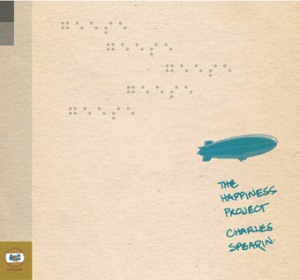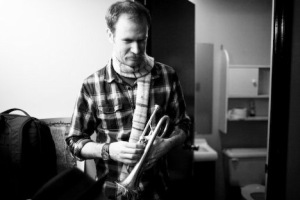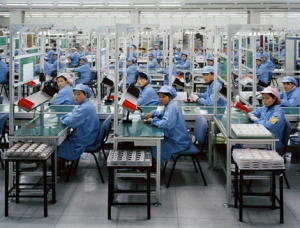 Since even those of us who work at the library are constantly surprised by all the cool, new, old, interesting, inspiring, and sometimes just downright strange books, music, movies, and websites that we come across every day, we’ve decided to start this new periodic column on the blog in order to share some of the more unusual things we find. We’ll update it whenever we find something exciting, so be sure to check back often. And while you’re at it, leave us a comment and tell us what strange and beautiful things you’re finding at the library and out in the world. Enjoy!
Since even those of us who work at the library are constantly surprised by all the cool, new, old, interesting, inspiring, and sometimes just downright strange books, music, movies, and websites that we come across every day, we’ve decided to start this new periodic column on the blog in order to share some of the more unusual things we find. We’ll update it whenever we find something exciting, so be sure to check back often. And while you’re at it, leave us a comment and tell us what strange and beautiful things you’re finding at the library and out in the world. Enjoy!
_____________________________________________________________________
The Happiness Project
To kick off the column, today we’re featuring The Happiness Project, a new  album from Canadian musician Charles Spearin. Hailing from Toronto, Spearin has long been a fixture of Canada’s independent music community, where he performs with the bands Do Make Say Think, and Broken Social Scene. For his new release, Spearin has created something extraordinary. Inspired by the people of his multicultural neighborhood in downtown Toronto, Spearin has made a recording that is a cross between a sociological experiment, an audio documentary, and a pop record.
album from Canadian musician Charles Spearin. Hailing from Toronto, Spearin has long been a fixture of Canada’s independent music community, where he performs with the bands Do Make Say Think, and Broken Social Scene. For his new release, Spearin has created something extraordinary. Inspired by the people of his multicultural neighborhood in downtown Toronto, Spearin has made a recording that is a cross between a sociological experiment, an audio documentary, and a pop record.
Sitting on his front porch on summer evenings with his wife and kids, Spearin noticed how all the adults in the neighborhood gathered together on their porches and sidewalks to talk and tell stories while the kids played nearby. He soon began inviting his neighbors over to his home, where he recorded interviews with them, vaguely focusing on the idea of happiness. After each interview, Spearin would listen back to what he’d recorded and look for “meaning and melody” in the voices. He was looking for interesting, meaningful snippets of dialogue, but also for the natural melody of the spoken word. Since we’re so accustomed to speaking and listening to one another all day long everyday, we often don’t really hear the musical qualities of the human voice. As Spearin himself says “we don’t pay any attention to the movement of our lips and tongue, and the rising and falling of our voices as we toss our thoughts back and forth to each other. The only time we pay attention to these qualities is in song. (Just as when we read we don’t pay attention to the curl and swing of the letters as though they were little drawings.)”
But this is where Spearin’s magic comes in. Taking his melody lines directly from the voices of his neighbors, he creates music out of the natural  rhythms and cadences of their speech. These found melodies are then transformed into musical notes and played on saxophones, guitars, violins, and a host of other instruments, as they become the focal points of the songs on the album. If this all sounds very formal, experimental, and well, strange, it is. But it’s also a whole lot more engaging and beautiful than you might think. From an old woman’s thoughts on love, to a child’s temper tantrum, to a deaf woman recounting the first time she was ever able to hear after successful surgery on her ear, these recordings are haunting and revelatory, teasing the hidden beauty out of the ordinary and illuminating the music of everyday life. For more information on The Happiness Project, and to hear the music, visit the website and watch the short film below.
rhythms and cadences of their speech. These found melodies are then transformed into musical notes and played on saxophones, guitars, violins, and a host of other instruments, as they become the focal points of the songs on the album. If this all sounds very formal, experimental, and well, strange, it is. But it’s also a whole lot more engaging and beautiful than you might think. From an old woman’s thoughts on love, to a child’s temper tantrum, to a deaf woman recounting the first time she was ever able to hear after successful surgery on her ear, these recordings are haunting and revelatory, teasing the hidden beauty out of the ordinary and illuminating the music of everyday life. For more information on The Happiness Project, and to hear the music, visit the website and watch the short film below.
[youtube=http://www.youtube.com/watch?v=gRmtvGk5IHw]


 Since even those of us who work at the library are constantly surprised by all the cool, new, old, interesting, inspiring, and sometimes just downright strange books, music, movies, and websites that we come across every day, we’ve decided to start this new periodic column on the blog in order to share some of the more unusual things we find. We’ll update it whenever we find something exciting, so be sure to check back often. And while you’re at it, leave us a comment and tell us what strange and beautiful things you’re finding at the library and out in the world. Enjoy!
Since even those of us who work at the library are constantly surprised by all the cool, new, old, interesting, inspiring, and sometimes just downright strange books, music, movies, and websites that we come across every day, we’ve decided to start this new periodic column on the blog in order to share some of the more unusual things we find. We’ll update it whenever we find something exciting, so be sure to check back often. And while you’re at it, leave us a comment and tell us what strange and beautiful things you’re finding at the library and out in the world. Enjoy! album from Canadian musician Charles Spearin. Hailing from Toronto, Spearin has long been a fixture of Canada’s independent music community, where he performs with the bands
album from Canadian musician Charles Spearin. Hailing from Toronto, Spearin has long been a fixture of Canada’s independent music community, where he performs with the bands  rhythms and cadences of their speech. These found melodies are then transformed into musical notes and played on saxophones, guitars, violins, and a host of other instruments, as they become the focal points of the songs on the album. If this all sounds very formal, experimental, and well, strange, it is. But it’s also a whole lot more engaging and beautiful than you might think. From an old woman’s thoughts on love, to a child’s temper tantrum, to a deaf woman recounting the first time she was ever able to hear after successful surgery on her ear, these recordings are haunting and revelatory, teasing the hidden beauty out of the ordinary and illuminating the music of everyday life. For more information on The Happiness Project, and to hear the music,
rhythms and cadences of their speech. These found melodies are then transformed into musical notes and played on saxophones, guitars, violins, and a host of other instruments, as they become the focal points of the songs on the album. If this all sounds very formal, experimental, and well, strange, it is. But it’s also a whole lot more engaging and beautiful than you might think. From an old woman’s thoughts on love, to a child’s temper tantrum, to a deaf woman recounting the first time she was ever able to hear after successful surgery on her ear, these recordings are haunting and revelatory, teasing the hidden beauty out of the ordinary and illuminating the music of everyday life. For more information on The Happiness Project, and to hear the music,  About two weeks ago, I watched the documentary,
About two weeks ago, I watched the documentary,  I haven’t been able to shake off these thoughts since watching the movie. I’ve been obsessively checking the tags on all my clothing and turning everything I own upside down, looking to see where things were made. Without fail, everything was manufactured overseas: China, India, Vietnam, etc. With each new tag I read, my heart sank a little more as I wondered under what conditions these goods had been produced.
I haven’t been able to shake off these thoughts since watching the movie. I’ve been obsessively checking the tags on all my clothing and turning everything I own upside down, looking to see where things were made. Without fail, everything was manufactured overseas: China, India, Vietnam, etc. With each new tag I read, my heart sank a little more as I wondered under what conditions these goods had been produced. This week I went shopping for a new pair of sneakers with all of these thoughts in mind. In store after store, and website upon website, I kept running up against shoes made overseas, usually in China. Even searches for small, supposedly ethically produced shoes led to manufacturing plants in China. I conducted what I consider to be a fair amount of research before buying a product, and nowhere was I able to find a sneaker whose origins I didn’t have at least some misgivings about. I finally settled on a shoe (made in China), which claims to be made from 100% recycled and sustainable materials (old car tires, plastic bottles, bamboo, hemp, etc.) and whose website alleged that all their products were manufactured according to legal (if not ethical) guidelines. I made the purchase, because I wasn’t sure what better alternatives existed, even though I questioned the trustworthiness of this (multimillion dollar) company’s claims. The sad fact of the matter was that they were the best ethical option I could find, but with each step in my new shoes I wonder: is this the best we can do?
This week I went shopping for a new pair of sneakers with all of these thoughts in mind. In store after store, and website upon website, I kept running up against shoes made overseas, usually in China. Even searches for small, supposedly ethically produced shoes led to manufacturing plants in China. I conducted what I consider to be a fair amount of research before buying a product, and nowhere was I able to find a sneaker whose origins I didn’t have at least some misgivings about. I finally settled on a shoe (made in China), which claims to be made from 100% recycled and sustainable materials (old car tires, plastic bottles, bamboo, hemp, etc.) and whose website alleged that all their products were manufactured according to legal (if not ethical) guidelines. I made the purchase, because I wasn’t sure what better alternatives existed, even though I questioned the trustworthiness of this (multimillion dollar) company’s claims. The sad fact of the matter was that they were the best ethical option I could find, but with each step in my new shoes I wonder: is this the best we can do?